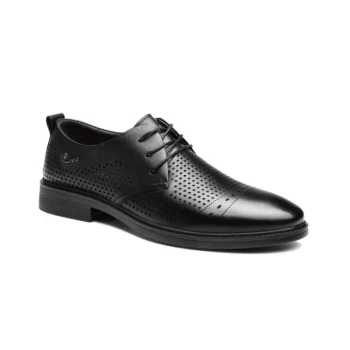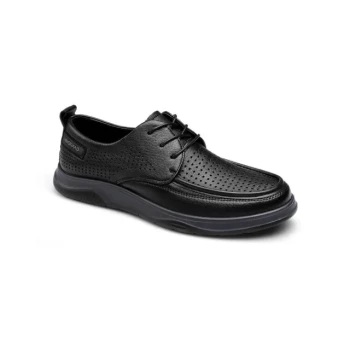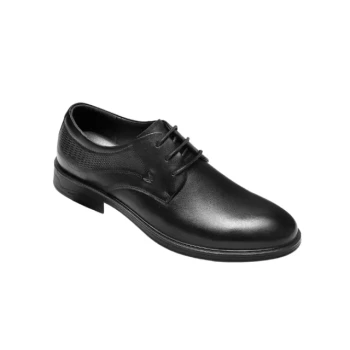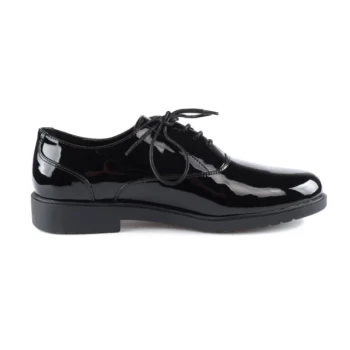For comfort, the choice between leather and rubber soles is not about which is better, but about what kind of comfort you need. Rubber soles provide immediate, flexible comfort with superior shock absorption, making them feel cushioned from the very first step. Leather soles offer a different path to comfort; they start stiff but gradually mold to the unique shape of your foot, creating a personalized, supportive fit over time.
The central question isn't "Which sole is more comfortable?" but rather, "Which sole's characteristics will provide the most comfort for my specific activities and environment?" The answer depends entirely on aligning the material's properties with your daily needs.
Deconstructing Comfort: The Two Different Paths
True comfort in footwear is a combination of flexibility, support, cushioning, and breathability. Leather and rubber achieve these qualities in fundamentally different ways, catering to different priorities.
Rubber Soles: Immediate Flexibility and Cushioning
Rubber soles are engineered for out-of-the-box comfort. Their natural flexibility means there is virtually no break-in period required.
This material excels at shock absorption, cushioning your feet from the impact of hard surfaces like concrete and pavement. This gives many rubber-soled shoes a familiar, sneaker-like feel ideal for long days of walking or standing.
Leather Soles: A Personalized, Molded Fit
Leather soles require an investment of time. They are initially rigid and can feel unforgiving compared to rubber.
However, with wear, the combination of body heat, moisture, and pressure causes the leather to soften and conform precisely to the contours of your foot. This creates a custom footbed that provides unique and targeted support where you need it most.
Beyond Initial Feel: Key Functional Differences
Comfort is also a product of how a shoe performs throughout the day. Durability, traction, and breathability are critical factors that directly impact your long-term comfort and satisfaction.
Durability and Traction
In terms of sheer longevity and grip, rubber is the clear winner. It is highly resistant to abrasion and is the standard for work boots, athletic shoes, and any footwear intended for frequent outdoor use. Its various tread patterns provide reliable traction in wet and uneven conditions.
Leather soles are less durable and wear down more quickly, especially on rough urban surfaces. They also offer very little traction and can be extremely slippery on wet or smooth floors.
Breathability and Foot Health
Here, leather has a distinct advantage. As a natural material, leather is porous and allows moisture to escape, keeping your feet drier and more comfortable over long hours of wear.
Rubber is non-porous and traps heat and moisture. While suitable for many situations, this can lead to discomfort in warm environments or during extended periods of wear.
Aesthetics and Formality
Leather is the undisputed king of elegance and formality. Its sleek, traditional profile is the standard for dress shoes and high-quality formal footwear.
Rubber soles are inherently more casual. While they are now integrated into many styles, they are primarily associated with utilitarian, athletic, or casual dress codes.
Understanding the Trade-offs
Choosing a sole material is an exercise in balancing priorities. Neither option is perfect, and each comes with inherent compromises.
The Cost of Instant Comfort (Rubber)
The primary trade-off for rubber's immediate cushioning and durability is a lack of breathability and a less formal appearance. They provide excellent functional comfort but may not be suitable for all professional or dress occasions.
The Investment in Long-Term Comfort (Leather)
The trade-off for leather's bespoke fit and superior breathability is the initial break-in period. You must also accept lower durability and poor performance in wet weather, requiring more careful maintenance.
Making the Right Choice for Your Needs
To select the right sole, stop thinking about which is "best" and start defining your primary goal.
- If your primary focus is immediate, all-day walking comfort on hard surfaces: Choose rubber soles for their superior shock absorption and flexibility right out of the box.
- If your primary focus is a breathable, customized fit for formal or office settings: Choose leather soles and be prepared for the initial break-in period to achieve a personalized fit.
- If your primary focus is durability and all-weather versatility: Rubber is the undisputed choice for its superior traction, water resistance, and overall resilience.
Ultimately, the most comfortable sole is the one that best matches the demands of your feet and your daily life.
Summary Table:
| Feature | Rubber Sole | Leather Sole |
|---|---|---|
| Initial Comfort | Immediate cushioning, flexible | Stiff, requires break-in |
| Long-Term Comfort | Consistent shock absorption | Molds to foot for personalized fit |
| Durability | High, abrasion-resistant | Lower, wears faster on rough surfaces |
| Traction | Excellent on wet/uneven surfaces | Poor, slippery when wet |
| Breathability | Low, traps heat/moisture | High, keeps feet dry |
| Best For | Walking, standing, casual/outdoor use | Formal wear, office settings |
Need the perfect sole for your customers? As a large-scale manufacturer, 3515 produces a comprehensive range of footwear with both leather and rubber soles for distributors, brand owners, and bulk clients. Our production capabilities ensure superior comfort, durability, and style tailored to your market. Let’s create the ideal footwear solution together—contact us today for a consultation!
Related Products
- Custom Manufactured Air Cushion Leather Business Shoes for Wholesale
- Wholesale Comfortable Business Casual Shoes Custom Manufacturing
- Wholesale Leather Business Casual Shoes with Dial Closure - Manufacturer of Comfort Dress Sneakers
- Wholesale Comfort Leather Business Shoes with Dial Lacing System
- Wholesale Breathable Perforated Leather Derby Dress Shoes for Custom Brands
People Also Ask
- What are the benefits of calf leather for dress shoes? Unmatched Elegance & Comfort
- Can sneakers be part of a business casual wardrobe? Yes, with the right style and fit
- Are sneakers acceptable in a business casual workplace? How to Choose the Right Style
- How does leather compare to other shoe materials in terms of durability and comfort? A Material Guide for Footwear
- Why are sneakers now accepted in office environments? The Shift to Modern Professionalism



















